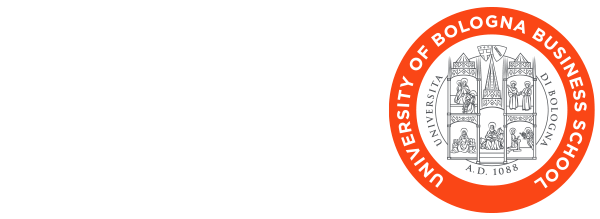
What is Customer Experience (CX) and why is it a true competitive advantage
25 July 2025What really is Customer Experience?
In today’s connected and competitive world, companies no longer compete solely on price or product quality, but above all on the overall experience they offer their customers. This is where Customer Experience (CX) comes into play, often confused with User Experience (UX) or Customer Service.
Let’s clarify: Customer Service refers to the support provided to the customer before, during, and after purchase. User Experience (UX) relates to the user’s experience with a digital product (such as a website or an app), with a strong focus on simplicity and usability.
Customer Experience, on the other hand, refers to the sum of all interactions a customer has with a brand throughout the entire lifecycle: from the first online advertisement to after-sales service, all the way to word-of-mouth.
In other words, customer experience is the overall perception a customer has of a company, based on every single touchpoint, both physical and digital. Taking care of CX therefore means building lasting relationships, increasing customer satisfaction, and generating loyalty.
Designing CX: mapping the customer journey
To deliver an effective Customer Experience, the first step is mapping the customer journey, the “path” a customer takes from the first brand interaction to purchase.
The customer journey map is a visual tool that helps companies identify touchpoints, understand customer emotions and expectations at each stage, detect friction points and obstacles, and ultimately implement improvements.
To design a journey map, we need to break down and analyze the various phases of the customer’s “path”:
- Awareness: the customer discovers the brand.
- Consideration: they evaluate alternatives and seek information.
- Purchase: they make a decision and take action.
- Post-purchase: they receive the product/service, interact with support.
- Loyalty: they become a repeat customer and/or a brand advocate.
This mapping process makes it possible to coordinate marketing, sales, and support into one unified, customer-centric strategy.
Tools to manage the customer experience
To orchestrate and optimize CX, companies now rely on advanced technologies: an effective strategy requires a solid digital infrastructure, able to collect, analyze, and activate data.
Customer Relationship Management
Modern CRMs such as Salesforce, HubSpot, or Dynamics 365 centralize all customer information, providing a unified, integrated view that helps personalize interactions. They make it easier to track the entire journey, segment audiences, and automate communications.
Marketing Automation
Platforms like Mailchimp, ActiveCampaign, or Marketo allow automation of messages, newsletters, offers, and follow-ups based on user behavior. They enhance both the effectiveness and relevance of communication, thus raising CX to a higher level.
Customer Satisfaction
Collecting feedback is crucial to measure satisfaction and act quickly where needed. Key metrics include:
- Net Promoter Score (NPS): likelihood of customers recommending the brand.
- Customer Satisfaction Score (CSAT): measures satisfaction after a specific interaction.
- Customer Effort Score (CES): indicates the effort required from the customer for an interaction.
These tools help companies pinpoint critical areas and continuously improve the customer experience
The Return on Investment (ROI) of Customer Experience
Many ask: how can we measure the success and ROI of a CX strategy? The answer lies in data: companies that invest in CX consistently show stronger economic performance, as numerous studies confirm.
Increasing loyalty
A positive Customer Experience drives customer retention. Satisfied customers not only repurchase but also become brand ambassadors, fueling word-of-mouth and organic acquisition.
According to Bain & Company, a 5% increase in retention can result in profit growth of 25% to 95%. Acquiring a new customer costs on average 5 times more than retaining an existing one.
Higher Customer Lifetime Value (CLV)
Satisfied customers tend to purchase more often, choose higher-value products, and be less price-sensitive. This boosts CLV, a key metric in assessing CX ROI.
Improving CX also drastically reduces churn rate (customer attrition). Most churn cases stem from negative experiences rather than product issues. A proactive approach to CX can prevent dissatisfaction and limit customer loss.
Bologna Business School courses to learn how to plan the perfect customer experience
To transform CX into a true competitive advantage, one must learn how to map the customer journey and leverage data to increase loyalty and ROI. This requires training pathways dedicated to this increasingly crucial field of analysis.
Bologna Business School offers a variety of up-to-date programs designed to meet concrete market needs.
Professional Master in Marketing Management – Applied Marketing and Sales
A 12-month, full-time program in English, tailored for recent graduates who want to acquire the tools to understand and manage the two core dimensions of sales: product and customer.
With a systemic approach and the goal of developing global vision, strategic thinking, flexibility, and strong communication skills, the program trains Brand Managers, Product Managers, Marketing Managers, and Sales Managers ready to grow within organizations.
Professional Master in Marketing Management – Analytics and AI for Marketing
A 12-month, full-time program in English, designed to train professionals who can use data and advanced technologies to create innovative marketing and sales strategies. Combining digital culture with the ability to turn complex analysis into effective solutions, it’s an ideal path for graduates with strong English skills aiming to enter the workforce as future leaders.
Professional Master in Gestione d’Impresa – Retail Management and E-Commerce
A 12-month, full-time program in Italian, targeted at graduates who want to develop both strategic and operational skills in physical and digital retail. Covering sales models, distribution strategies, digital technologies, negotiation, and logistics, the program prepares sales managers, buyers, and trade marketing professionals, with practical experience through internships.
Open Program in Sales Management
Inspired by Anglo-Saxon markets—pioneers in reshaping sales management in response to rapid market changes—this course is designed for middle managers who want to expand their Sales Management expertise and for sales account professionals aspiring to leadership roles. The focus is on understanding sales dynamics, customer service importance, B2B negotiations, and customer relationship management.
Customer Experience is not an accessory activity but a strategic competitive lever. Differentiation today means delivering consistent, personalized, and memorable experiences across every stage of the journey.
Understanding that customer satisfaction is the true success indicator enables companies to grow sustainably, improving reputation, loyalty, and financial performance.
To transform an organization into a truly customer-centric model, and to become a manager capable of steering CX dedicated training paths are essential.
BBS offers year-long Masters and immersive programs capable of radically shaping careers, empowering professionals to understand customer needs and exceed expectations.
